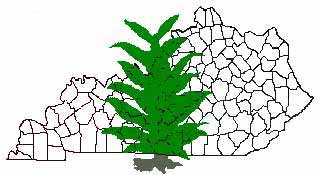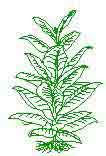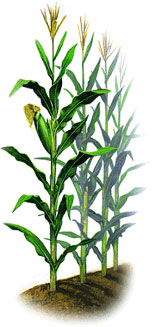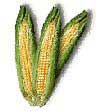

Watch your mailbox carefully because pesticide license renewal forms are scheduled to be mailed in mid- November. Current commercial and non-commercial pesticide licenses expire December 31, 2003. All that is required to maintain a valid license is to return the license renewal form (and applicable fees).
Check the business address on your license because that is where the renewal form will be sent. If you have moved or your address has changed, inform the Division of Pesticide Regulation office right away - (502) 564-7274 or email Wendy.cleveland@kyagr.com
Failure to renew the license will require taking the test again, even if your certification is still valid. The expiration date of your certification is on your white card.

Changes in Kentucky pesticide laws and regulations
shifted continuing education to a credit hour system.
Commercial and non-commercial applicators must
accumulate 12 hours of training (9 general + 3 category
specific) to maintain certification. A continuously
updated list of approved training meetings, along with
locations, numbers of hours, and contact information is
posted at -
http://www.kyagr.com/enviro_out/pesticide/programs/testing/CEUlistAG.htm
Visit the site regularly to see what has been added.


 Recall that the trade agreement established between the
United States (U.S.) and The Peoples Republic of China
(China) in 2001 allowed U.S. flue-cured and burley
tobaccos to be imported into China. Those protocols
allow China to import dried U.S. tobacco that is free of
active tobacco blue mold oospores. This spore stage is
the product of sexual reproduction by the agent causing
blue mold, Peronospora tabacina. Fortunately, the oospore
stage is not commonly found in U.S. tobacco during
blue mold epidemics, but it does occur sometimes.
Consequently, it is required that all U.S. tobacco
exported to China will be inspected for blue mold
oospores at two points before shipment - in the
production fields and in the shipping containers.
Recall that the trade agreement established between the
United States (U.S.) and The Peoples Republic of China
(China) in 2001 allowed U.S. flue-cured and burley
tobaccos to be imported into China. Those protocols
allow China to import dried U.S. tobacco that is free of
active tobacco blue mold oospores. This spore stage is
the product of sexual reproduction by the agent causing
blue mold, Peronospora tabacina. Fortunately, the oospore
stage is not commonly found in U.S. tobacco during
blue mold epidemics, but it does occur sometimes.
Consequently, it is required that all U.S. tobacco
exported to China will be inspected for blue mold
oospores at two points before shipment - in the
production fields and in the shipping containers.
China has successfully imported burley tobacco under this trade agreement. For example, in March 2003 the Burley Tobacco Growers Cooperative Association based in Lexington, Kentucky exported approximately a million pounds (farm-market equivalent) of burley to China.
During August and September, the University of Kentucky College of Agriculture, coordinated by the Plant Pathology Department, continued to assist Kentucky's burley growers in this marketing effort by conducting another survey for the USDA APHIS PPQ. The field inspection-survey for the 2003 crop required a major effort because blue mold was widespread about the state this season. This survey involved collecting green leaf tissues with blue mold lesions taken directly from the field during the active period of the 2003 epidemic. Burley samples from 86 counties (representative of Kentucky's marketing areas for the 2003 crop) were collected according to the prescribed protocols and submitted to the Kentucky Office of State Entomologist, who submitted them to APHIS.
We learned last week that NO OOSPORES were found during microscopic examination of the Kentucky samples by the laboratory conducting these tests for the USDA APHIS PPQ. These findings should place Kentucky's tobacco in good standing for exporting again to China, assuming consistent results are obtained from neighboring states that also had blue mold since the burley tobacco exported from here also contains tobacco from our neighbors in Indiana, Missouri, Ohio, and West Virginia.
For the latest blue mold status and other tobacco disease information, check the KY Blue Mold Warning System online.
![]() http://www.uky.edu/Agriculture/kpn/kyblue/kyblue.htm
http://www.uky.edu/Agriculture/kpn/kyblue/kyblue.htm

For more information about tobacco pests, visit "Insect Management Recommendations".

 Producers who have left corn in the field should check
the stalk strength of those fields. Although I have not
seen or heard of significant stalk rot problems this
season, several factors could conspire to create a
problem in unharvested fields.
Producers who have left corn in the field should check
the stalk strength of those fields. Although I have not
seen or heard of significant stalk rot problems this
season, several factors could conspire to create a
problem in unharvested fields.

 Seed treatments are offering new options for control
many of the more common insect pests of corn. There
are now several commercially applied seed treatments
that can be specified on seed when seed orders are
placed. Some of the insects that are controlled with these
treatments include flea beetle, white grubs, wireworms,
rootworms, black cutworm, seedcorn maggot, and corn
leaf aphid.
Seed treatments are offering new options for control
many of the more common insect pests of corn. There
are now several commercially applied seed treatments
that can be specified on seed when seed orders are
placed. Some of the insects that are controlled with these
treatments include flea beetle, white grubs, wireworms,
rootworms, black cutworm, seedcorn maggot, and corn
leaf aphid.
But growers need to be aware that not all of the seed treatments provide the same level of protection. For example, seed treatments containing clothianidin (Poncho) have provided very good control of black cutworm in University of Kentucky trials. Growers should also be aware that some of the treatments may be available at different rates on the seed, the higher rates providing longer control and often controlling additional pests. An example of this is imidacloprid, where Gaucho is the lower rate and Prescribe is the higher rate. Pay attention to the pests that can be controlled with these treatments, and match the proper seed treatment with the known pest problems in a particular field.
Many of the new seed treatments are systemic, and will move through the plant to provide control in some cases above and below ground. These seed treatments must be ordered on the seed and cannot be applied on farm. They are virtually dust free formulations that will help to reduce exposure while loading seed into hoppers. This is in contrast to the powdery hopper box treatments that are still available for on-farm application.
There are now many alternatives for control of soil insect pests in corn including crop rotation, granular insecticides, liquid insecticides, seed treatments, and biotech varieties for certain pests. When deciding which strategy that will used to control soil insect pests in corn, consider the price of control alternatives, the pests that need to be controlled, the equipment that is needed, and the degree of control that can be expected. The cost of control can be compared to the level of risk a grower is will to accept. Growers should always consider using rotation as a means to reduce soil insect problems in corn where practical, it is often the most economical strategy for certain pests.
For information about corn pests, visit
"Insect Management Recommendations".


Protecting stored seed is a somewhat different task form protecting stored grain/feed in the food /feed system. The same insects attack the seed and some of the tools for prevention and control are the same. However, several of the tools are different and the type of protection needed is different.
Two general groups of insecticides available for protecting stored seed. The first group is labeled for controlling stored grain pests during storage while the second group is labeled to protect the seed after planting. Products labeled for stored seed are Actellic, Reldan and Storcide. These products are specifically labeled against stored products insects such as bran bugs, weevils grain moths, etc. Actellic, Reldan and Storcide are approved for use on commodities that are destined for food and feed.
Formulations of Cruiser, Gaucho, and Lorsban are labeled for protecting the seed. Most often they provide protection of the seed as it germinates and in the small seedling stages, from insects in and on the soil (wireworm, aphids, seed beetles and maggots etc). They may also provide protection from stored grain insects but are for use on seed to be planted, not for use in the commodities immediately destined for food and feed.
The seed storage manager must look closely at the intended use of that seed/grain and whether or not that use is likely to change. Also, the manager must decide whether or not the seed/grain must be able to germinate or will simply be in a bulk that needs to be protected from becoming "buggy".
Regardless of the route chosen, the pesticide label must be examined closely. Not all company claims are equal in either the list of pests for which protection is claimed, the ease of treatment, or the level of protection given.
The tips listed below help protect seed. However, they assume that the seed is initially free from insect infestation. Infested seed must be fumigated to control existing populations then treated with one of the seed protectants.
For more information about crop and livestock pests, visit
"Insect Management Recommendations".


 Rust infections are currently very abundant on cool-
season grasses in pastures and lawns. Rust diseases are
caused by fungi which infect the foliage and produce
small (1-3 mm), orange pustules erupting from leaves.
Often pustules are surrounded by a yellow halo;
eventually, the entire leaf turns yellow and dies. While
rust diseases of cool-season grasses are common every
year in the autumn, the predominance of cool, rainy
weather this past growing season has been especially
favorable for leaf rusts of cool-season grasses. Kentucky
bluegrass and perennial ryegrass are especially affected,
although I have seen rust on tall fescue and
orchardgrass, as well.
Rust infections are currently very abundant on cool-
season grasses in pastures and lawns. Rust diseases are
caused by fungi which infect the foliage and produce
small (1-3 mm), orange pustules erupting from leaves.
Often pustules are surrounded by a yellow halo;
eventually, the entire leaf turns yellow and dies. While
rust diseases of cool-season grasses are common every
year in the autumn, the predominance of cool, rainy
weather this past growing season has been especially
favorable for leaf rusts of cool-season grasses. Kentucky
bluegrass and perennial ryegrass are especially affected,
although I have seen rust on tall fescue and
orchardgrass, as well.
The presence of severe rust in pastures has gotten the attention of horse managers in central Kentucky. Understandably, after the devastating outbreak of Mare Reproductive Loss Syndrome in 2001 (which has been tied to the Eastern Tent Caterpillar), horse managers are concerned whenever an unusual level of a pest/disease problem occurs. It should provide a measure of reassurance that we are aware of no risk of mycotoxins from these fungi. While there are always new mycotoxins to be discovered, nowhere in a substantial literature collection available to the first author is there mention of any rust fungus as a source of any mycotoxin.
The reddish pustules are sources of fungal spores,
which can create a concern for dustiness and subsequent
respiratory problems. The grass material baled and fed
as hay or used as bedding could be excessively dusty, so
horse managers should be on guard for those situations.
A risk of excessive dustiness in open pastures seems
unlikely, because of rapid dilution of spores in air
currents and breezes.


This is the season when many homeowners begin to burn firewood. Firewood is a source of warmth and comfort, but can also be a way for pests to enter homes. Most pests living in firewood pose no harm to people, furniture, or to the structure. Nonetheless, homeowners often become concerned when insects emerge from wood that is brought indoors, and crawl or fly about the house.
Several types of pests dwell within firewood. Termites, wood boring beetles, and carpenter ants often tunnel and feed within the logs, but upon emergence, usually will not infest structural wood or furniture inside the home. Other kinds of pests hide or overwinter beneath the bark. Examples include centipedes, ground beetles, sowbugs, pillbugs, spiders, scorpions and wood cockroaches. Typically, these pests emerge within a few days or weeks of the wood being brought indoors. For the most part, they are harmless other than by their presence.
Preventing Firewood Pests
Control of firewood pests is best accomplished by management of the firewood itself. Spraying/dousing the wood with insecticides is not necessary, effective, nor recommended, and could produce harmful vapors when the wood is burned. A better plan is to:


Kentucky fruit growers are often faced with fighting serious diseases of fruit crops. This is especially true during wet growing seasons such as this year where Kentucky experienced the 2nd wettest April-September since weather data have been recorded. Although for the most part several fungicides are available for use against most fruit crop diseases, availability of additional effective fungicide tools are welcome to most fruit growers
Pristine fungicide, manufactured by the BASF Company, was recently registered for use on many fruit crops. Pristine 38WG is a combination of two fungicides, pyraclostrobin and boscalid. Pyraclostrobin is the active ingredient in the fungicide Cabrio and is similar in chemistry to other strobilurin fungicides registered for fruit disease control such as Abound, Sovran, and Flint. These fungicides are all reduced risk fungicides made from chemicals derived from a mushroom that grows on pine cones. Boscalid, an anilide fungicide, is the active ingredient in the fungicide Endura, an excellent powdery mildew control chemical. This combination of fungicidal compounds not only interferes with fungal cell respiration and production of energy, but it also deprives the fungal cell of its energy source and eliminates the availability of chemical building blocks for synthesis of essential cellular components. This pre-packaged mix of fungicides gives the fungicide Pristine broad-spectrum activity against many fruit diseases.
Pristine is registered for control of diseases important to Kentucky in the following crops:
Fungicide resistance management will still be important
for Pristine fungicide. For most crops, no more that 2
consecutive applications are suggested before changing
to a fungicide with a different mode of action.
Fungicides having similar modes of action to
pyraclostrobin such as Abound, Flint and Sovran would
not be appropriate in the fungicide rotation. Pristine
and other new fungicides will be listed in the 2004
Commercial Tree Fruit Spray Guide and the 2004
Commercial Small Fruit and Grape Spray Guide,
available at Kentucky County Extension Offices early
next year.

TWO MORE INDEPENDENT STUDIES
CONFIRM 2,4-D NOT A CANCER RISK
OTTAWA -
Two studies recently published in peer-
reviewed journals by researchers of the U.S. National
Cancer Institute (NCI) reinforce the existing body of
scientific evidence that the herbicide 2,4-D does not
present a cancer risk to farmers and other pesticide
applicators. The first study is a re-analysis of data from
three earlier studies conducted in Kansas, Nebraska and
Iowa-Minnesota during the 1980s and 1990s.The NCI
researchers determined: "Whereas an indicated effect of
2,4-D exposure on NHL (non-Hodgkin,s lymphoma)
was reported in the NCI's Nebraska and Kansas
studies, this analysis of the pooled data found no
association with having ever used 2,4-D."
NCI researchers also concluded:"Although epidemiological data on cancer risks from exposure to specific pesticides are scant, it also suggests that while some pesticides may present a cancer risk, many, maybe even most, pesticides do not." The article by A.J. De Roos was published in the Journal of Occupational Environmental Medicine. The second report concerns NCI's Agricultural Health Study of 55,332 male pesticide applicators. The researchers determined that the cancer incidence among farmers and applicators was significantly lower than the cancer incidence in the general population. Furthermore, the researchers found that there was no association between the use of 2,4-D and prostate cancer. The article by Michael C.R. Alavanja was published in the American Journal of Epidemiology (Am J Epidemiol 2003;157:800). This latest research by the National Cancer Institute is critically important because it reinforces earlier decisions of the World Health Organization, U.S. Environmental Protection Agency and the European Commission, stated Donald Page, Executive Director of the Task Force. "The overwhelming body of modern scientific evidence clearly demonstrates that the use of 2,4-D by farmers and other applicators does not present a cancer risk."
About 2,4-D
Since being first registered in Canada in 1946, the
herbicide 2,4-D has become the most widely used
agricultural herbicide in this country and worldwide. It
is used on many crops that are an important element of
an individual's diet such as wheat, barley, rice,
soybeans, potatoes, and pome, stone and citrus fruits. It
is also a component of herbicides used by lawn care
professionals and homeowners to protect turf grass
from weeds. Since 1986, more than a dozen government
and expert panels, including the Canadian Centre for
Toxicology review conducted for the Ontario Ministry
of the Environment, World Health Organization,
European Commission, Harvard University School of
Public Health, University of Michigan School of Public
Health, have concluded that 2,4-D does not pose an
unreasonable risk to human health or the environment
when used according to label instructions.

NOTE: Trade names are used to simplify the information presented in this newsletter. No endorsement by the Cooperative Extension Service is intended, nor is criticism implied of similar products that are not named.
Lee Townsend
Extension Entomologist